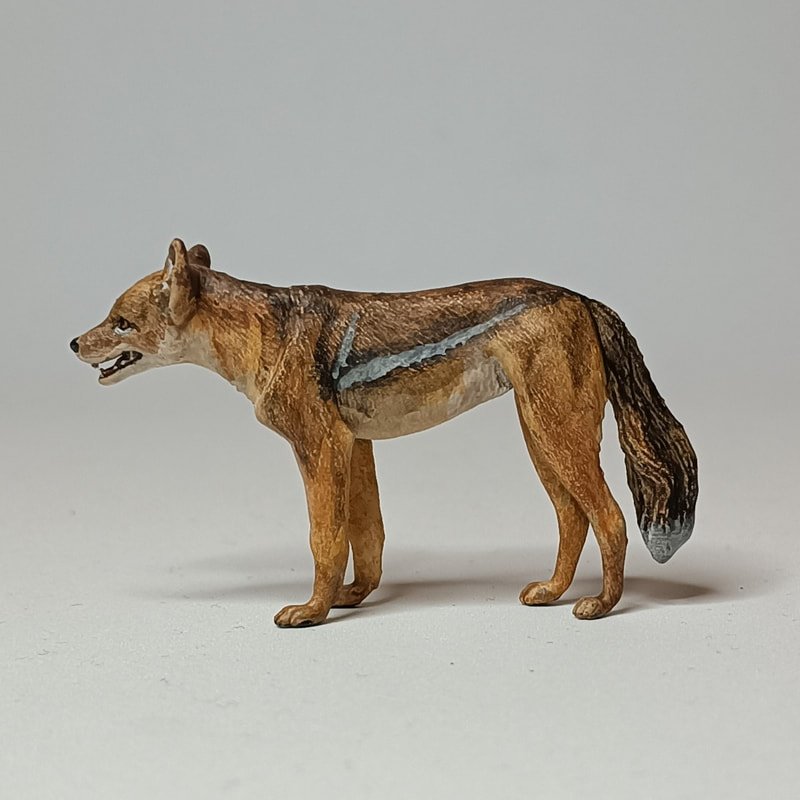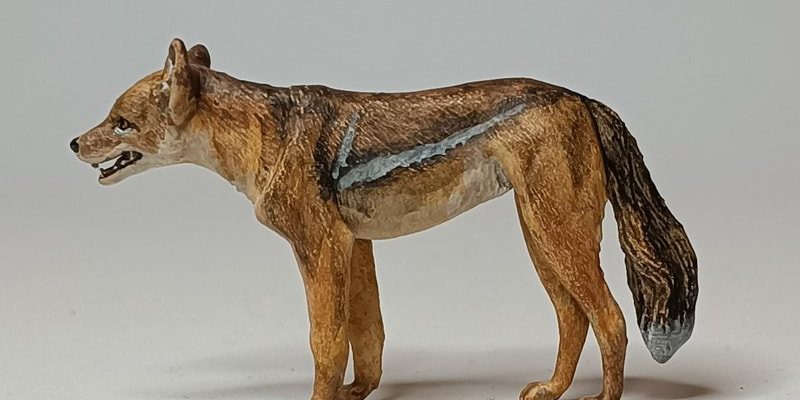
The side-striped jackal, with its unique appearances and behaviors, is more than just a fascinating subject for animal lovers. It’s a story of survival and adaptation, with roots that go deep into the past. So grab your coffee, and let’s explore its journey through time, uncovering how this charming canine has evolved and thrived in the wild.
What Is the Side-Striped Jackal?
The side-striped jackal (Canis adustus) is a medium-sized canid found mainly in southern and eastern Africa. Recognizable by its distinctive side stripes, this jackal stands out with its long legs and bushy tail, which it often raises when excited or curious. Unlike its more aggressive relatives, the side-striped jackal tends to have a milder disposition, leaning toward a scavenger lifestyle rather than outright hunting.
Here’s the thing: side-striped jackals are incredibly adaptable. They can thrive in various habitats, including savannas, forests, and even arid regions. Living in pairs or small family groups, they communicate with a range of vocalizations, including howls and yips. While they might not seem like the star of the animal kingdom, their adaptability and behavior offer a rich area for study.
A Peek into Their Evolution
Now, let’s dive into the evolutionary history of the side-striped jackal. These fascinating animals belong to the Canidae family, which also includes wolves, foxes, and domestic dogs. The Canidae family emerged around 34 million years ago, and like most canids, jackals share a common ancestor.
The side-striped jackal branched off from this ancestor around 4 to 5 million years ago, developing unique traits to help them survive in diverse environments. Unlike their hunting-focused relatives, side-striped jackals evolved as opportunistic feeders, relying on scavenging and smaller prey. This shift in diet allowed them to inhabit areas where larger predators might dominate.
Interestingly, researchers believe that the side-striped jackal’s unique vocalizations have also played a part in their evolution. These vocal skills may have helped them maintain social bonds and coordinate hunting efforts within family units, enhancing their survival chances.
Physical Characteristics and Adaptations
One striking feature of the side-striped jackal is its adaptations, which play a crucial role in its day-to-day survival. With a slender body and long legs, the side-striped jackal is built for speed and agility. Its soft, thick fur helps it regulate body temperature, making it suitable for hot climates.
These jackals also have incredible hearing, allowing them to detect prey or danger from a distance. Their coloration—typically a mix of gray, black, and light brown—provides excellent camouflage in the wild. When hiding in tall grass or bushes, this natural disguise helps them avoid larger predators.
Aside from physical traits, their behavior showcases fascinating adaptations. Side-striped jackals are often seen foraging alone or in pairs, scouting for fruits, small mammals, and carrion. They play a vital role in their ecosystem by helping to clean up the environment and control rodent populations.
Social Structure and Behavior
Social dynamics in the side-striped jackal world are intriguing. Typically, they form monogamous pairs that mate for life, a behavior that’s a bit unusual for canids. These pairs work together to defend their territory, which can span several square miles, marking it with urine and vocalizations.
In family groups, you’ll find offspring from previous seasons helping care for younger pups. This cooperative breeding behavior not only strengthens the social bonds within the group but also improves the pups’ chances of survival. Here’s the thing: the tight-knit family structure is critical for their success in the wild.
You might be wondering what happens when food is scarce. Side-striped jackals are opportunists. If the situation calls for it, they will scavenge and adapt their diet to whatever is available. This flexibility is key to their survival in changing environments, ensuring that they can thrive even when resources are limited.
Conservation Status and Threats
Unfortunately, like many wildlife species, the side-striped jackal faces challenges. Their conservation status is listed as Least Concern, but this doesn’t mean they’re out of the woods. Habitat loss due to human activities is a significant threat. As more land is developed for agriculture and urbanization, these jackals lose their natural homes.
Moreover, they can come into conflict with farmers, leading to persecution. Farmers often view them as pests since they may prey on livestock. It’s a classic case of misunderstanding: side-striped jackals typically prefer smaller animals and scavenging over hunting larger domestic animals.
Conservation efforts are essential to ensure a stable future for the side-striped jackal. By promoting coexistence and raising awareness about their ecological role, these initiatives can help protect their habitats and reduce human-wildlife conflict.
Why Understanding the Side-Striped Jackal Matters
So, why should we care about the side-striped jackal? Well, understanding its evolutionary history and role in the ecosystem helps highlight the complexity of nature. Every species plays a part in its environment, contributing to biodiversity and ecosystem health.
By studying the side-striped jackal, researchers can also gain insights into adaptation and resilience in changing landscapes. This knowledge is crucial, especially as we face global environmental challenges. Preserving the side-striped jackal isn’t just about saving one species; it’s about protecting an entire ecosystem.
Moreover, the side-striped jackal serves as a reminder of how interconnected all species are. By learning about their lives, we gain a better understanding of our impact on wildlife and the importance of conservation.
The evolutionary history of the side-striped jackal is more than just a tale of survival; it’s a testament to adaptability in a world of constant change. These charming canids may not get as much attention as their larger relatives, but their story is equally compelling.
Whether it’s their unique social structures or their roles as scavengers, side-striped jackals play a vital part in their ecosystems. Protecting them ensures a healthier environment for everyone. So the next time you think about canids, remember this quiet yet remarkable member of the family and their incredible journey through time.

